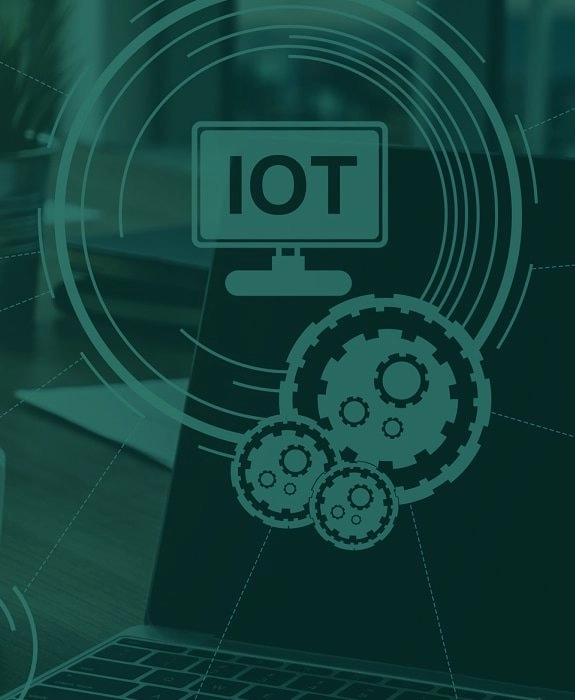Table of Contents
Updated October 2021
Internet of things (IoT) is the networking of devices, vehicles, and home appliances with electronics, software, and connectivity that allow the constituents of the network to connect, interact, and exchange data with each other. IoT involves extending Internet connectivity to traditional non-internet-enabled physical devices and everyday objects. With the rapid advancements of artificial intelligence and machine learning, IoT solutions have become extremely prominent in today’s society. Here are the top 5 IoT technology trends to look out for:
1. IoT Security
The moment you connect an everyday object to the Internet or any sort of network, it is prone to security vulnerabilities. Therefore the IoT security space is going to play a vital role in ensuring our devices are safe from information attacks and physical tampering. If we understand how the day-to-day objects we use have mostly simple components and rudimentary systems that may not lend themselves to sophisticated security measures, the significance of IoT security becomes quite apparent.
2. IoT Analytics
All this information that is now being mined and analyzed from these objects will require a whole new set of tools and approaches. Developing new business models around objects that are gathering information about a customer will require accurate reports. IoT Analytics will be combing through the exponentially increasing data volumes and will thus require new technologies to understand this data.
3. IoT Device Management
Right now all you have to worry about is your laptop, desktop, car, smartphone, and maybe an occasional digital watch! That’s already more than you can handle without losing track of your data. The future will include many more devices that will need firmware updates, software updates, diagnostics, crash analysis and reporting, physical management, and security management. The scale of device management will have increased to perhaps a million devices and will require tools to manage and monitor them!
4. IoT Processors
The choosing of processor architectures for IoT devices will require advanced technical skills. These processors will essentially decide what kind of security, encryption, power consumption, operating system, updatable firmware, and device management tools will go into IoT devices.
5. IoT Operating Systems
Traditional operating systems will not be supported by IoT devices. It won’t be possible to jam Windows or iOS or Android into all IoT applications. These operating systems will have limitations in areas such as power consumption, response time, and memory. In fact, in some cases, tailor-made operating systems will have to be developed for IoT-specific devices or for specific hardware footprints. There will be a need for operating system development for the future of IoT devices.
Does Your Business Need Custom Software Development Services?
If you are looking for custom web application development we can help. We’ve developed several innovative web applications for many different types of businesses among many industries.
Q: How will my business benefit from a custom software solution?
A: We develop custom software solutions from scratch, or customize off-the-shelf products, depending on your need. The reality is, off-the-shelf software solutions don’t always meet the full needs of every business, especially when the needs are unique. That’s where custom software development can help. Whether your goal is to create new efficiencies in your business, cut unnecessary costs by eliminating manual efforts, or automate business processes so you have more time to do the tasks which require the human touch, rest assured we can develop a solution to achieve your unique business needs and bring a new level of efficiency to your organization.
Q: How much does it cost to have a custom software developed?
A: The time and cost it takes to complete a project varies from one project to another, as each client’s requirements are unique. In some cases, depending on the nature and complexity of the project, a detailed discovery phase i.e.; requirements gathering phase is required in order to assess the total effort (time, money and resources) for project completion. Our costs scale based on the size and the end goal of the project.
Q: Who will be my point of contact at Asahi Technologies?
A: The project manager assigned to your project will usually be your primary point of contact throughout the course of the engagement with Asahi Technologies.
Let the team at Asahi Technologies help you with your next custom web application for your business.
Want to read some of the 5-Star Reviews of our application development services?
Contact us today to get a free consultation for your business.
Stay ahead of the game with our helpful resources

4 digital solutions to address common application performance issues
High network latency, memory leaks, slow page loads, heavy CPU usage, and unresponsive servers are all typical performance issues we’ve experienced at some point when using or accessing digital applications. With how easy they occur in projects across verticals, you might be wondering whether the development teams behind these programs have done enough due diligence prior to the release. But human errors and oversight aren’t always the culprit. The reality is that while developers can strive to develop a fully functioning program with virtually no apparent faults upon delivery, no software is truly error-free. Even the most rigorously tested applications

6 useful tips for creating more robust application lifecycle management
As digital technology becomes the norm, software acquisition is now key to gaining a competitive edge in today’s market. Be it as a value offering tailored to consumers or a productivity tool to run complex processes, custom software undeniably helps companies drive growth and deliver value more efficiently. Just as necessary as having a proprietary application is prescribing a standard procedure to govern and maintain its utility. This is to ensure that your business can develop or adopt the right type of software—one that can fully cater to your business needs while keeping disruption to a minimum across critical milestones.

5 major roadblocks businesses must overcome when transitioning into a new software environment
As the business landscape becomes increasingly saturated, staying ahead of the curve often means embracing disruptive technologies to meet the fickle market demands. In most cases, this entails knowing when to pivot your current strategy to an entirely new solution. But recognizing the importance of digital shift is one thing; implementing the necessary IT upgrade is another. A global survey by Deloitte has found that although 87% of companies manage to identify the impact of digital trends on their industries, only 44% have adequately prepared for the coming disruptions. This vast disconnect between organizational expectations and conditions in the field

Is cloud computing the answer to better software development?
Cloud computing is perhaps not a term often heard in daily conversations, but it is one with a far-reaching impact on our technological needs. From expansive options of online data storage to numerous suites of web-based productivity tools like Google Workspace, nearly everyone has used a cloud-enabled technology. Over the last decade, this high degree of versatility also underpins the rapid cloud uptake among businesses. In fact, one survey has found that 94% of companies have already shifted their computing workloads on cloud platforms to varying extents. Unsurprisingly, the market size for cloud technology continues to grow exponentially. With a



